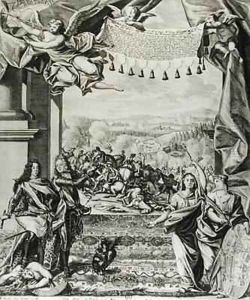Decker, Paul (the Younger) Paintings
Paul Decker the Younger was a German architect, architectural theorist, and engraver, born in 1685. His contributions to the field of architecture, particularly within the Baroque style, have been acknowledged for their inventive and detailed designs. Decker's work is representative of the transition between the high Baroque and the emerging Rococo style, capturing the grandeur and complexity of the former, while integrating the lighter, more playful elements of the latter. His father, Paul Decker the Elder, was also a notable figure in the realm of architecture, providing a significant influence on Decker's early development and career path.
Decker's body of work includes not only architectural designs but also a series of influential publications that circulated widely across Europe, spreading his architectural theories and design ideas. Among his notable works is the architectural treatise 'Fürstlicher Baumeister oder Architectura Civilis', published in 1711–1716. This work, illustrated with engravings by Decker himself, was pivotal in disseminating Baroque architectural concepts and practices. It showcased plans, elevations, and details of palaces, gardens, and interior decorations, emphasizing the importance of symmetry, proportion, and the integration of decorative elements.
Despite the significance of his printed works, few of Decker's architectural designs were realized during his lifetime. The reasons for this are multifaceted, including the economic conditions of his era and the specific demands of architectural practice in the German states. Nonetheless, his influence was felt through his publications, which continued to inspire architects and designers long after his death in 1742. Decker's legacy lies not only in the buildings that might have been but also in the ideas and visual culture he helped to shape, which would carry forward into the Rococo period and beyond.
In summary, Paul Decker the Younger was a figure of transition in early 18th-century architecture, bridging the gap between the grandiosity of the Baroque and the emergence of the Rococo. His theoretical works and designs contribute significantly to our understanding of the period's architectural ambitions and aesthetic shifts. Despite the limited realization of his architectural designs, his published works ensure his place within the history of architecture as a key figure in the development of architectural thought and practice in the Baroque and early Rococo periods.
